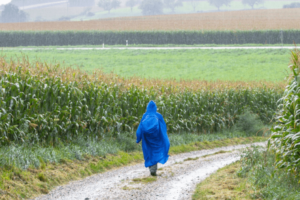We all know that it is often difficult to get a good night’s sleep in a tent, but to add insult to injury, it is particularly unpleasant when you are woken in the morning by unexpected droplets of musky water on your face.
If this does happen to you, the only positive thing you can from the situation is that your tent does not leak and it’s more than likely that what you are feeling is the direct result of condensation. The best news of all, this can easily be avoided by taking a few simple steps.
What Causes Condensation To Occur?
Condensation forms when there is a comparative temperature difference with the outside temperature being substantially colder than it is inside and can be particularly prevalent when the temperature drops suddenly during the night. Rain causes condensation in a similar way. The rain cools down the outer fabric of the tent and eventually comes in contact with the warm air inside the tent, resulting in condensation.
Five Rules To Prevent Condensation
- Airflow – To prevent condensation from occurring inside your tent, you must increase the airflow into your tent and lower the temperature inside. One of the easiest and most effective ways of doing this is to partially open your tent door. Most tents will have an outer fabric door followed by an inner mesh door which allows you to leave the outer door open with the mesh lining closed to prevent any bugs from entering your tent. You should also find vent holes around the sides of your tent which you must ensure are free from obstruction.
- Tent Pitch – Pitching in the correct environment is a key factor in minimising the opportunity for condensation to occur. Condensation clearly derives from water and so try to find a dry spot that is as far away from water as possible to pitch your tent. Try to avoid pitching your tent on leaves or twigs as these tend to collect moisture during the night.
- Fly Sheet – Even if it is not raining, it is most advisable to set and put up your fly sheet as this will provide you with an extra layer of protection against any condensation.
- Tent Warmth – Avoid anything that will raise the temperature inside your tent. This includes cooking food, snuggling with a hot water bottle, and consuming hot drinks. If you want to keep warm, put on extra layers of clothes or buy a warmer sleeping bag. In particular, try to keep your head and feet as warm as you can to effectively warm your body and prevent bodily heat from escaping.
- Hygiene – Place any wet clothes or muddy boots outside of your main tent area. Make sure you put them on top of a ground sheet and cover them with an awning. Water will most likely seep into your tent if you apply pressure to the fabric and so therefore, you should avoid touching the sides of your tent at night. If you move around a lot in your sleep, you may have to learn this rule the hard way.
Finally
The most effective way to rid of condensation is to use towels to wipe it away. Do not press too hard against the tent or, as mentioned earlier, more water will seep through. If you wake up in a condensation filled tent and have time to spare before you have to depart, try to allow time for the tent to dry out under the sun.







